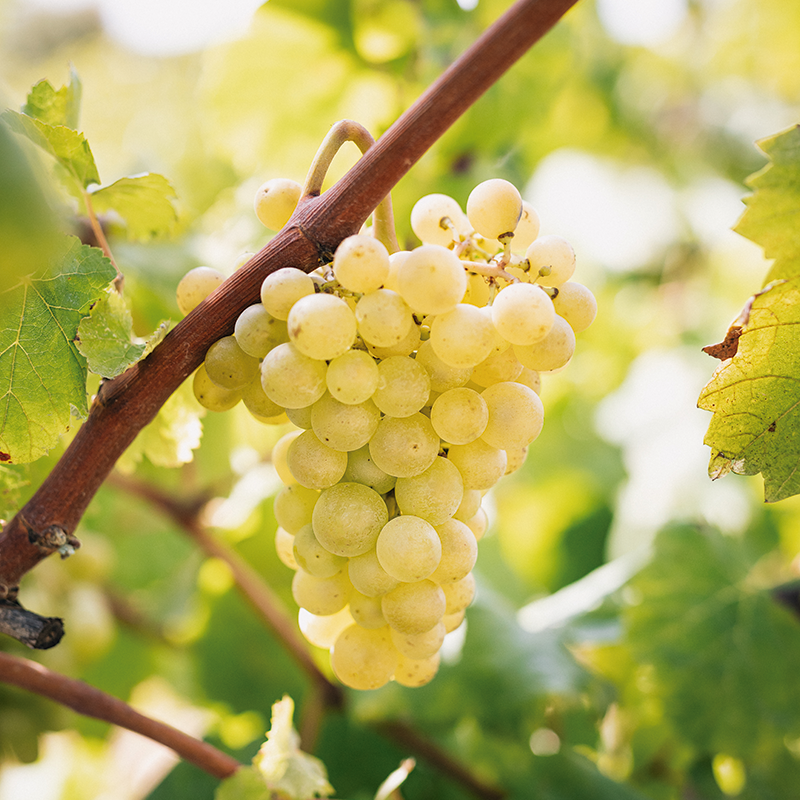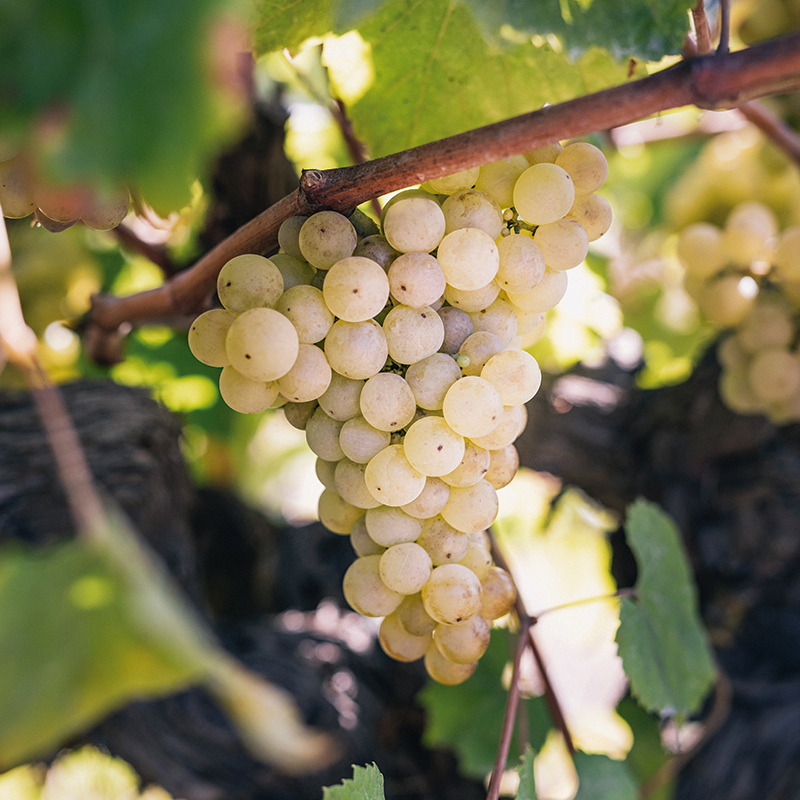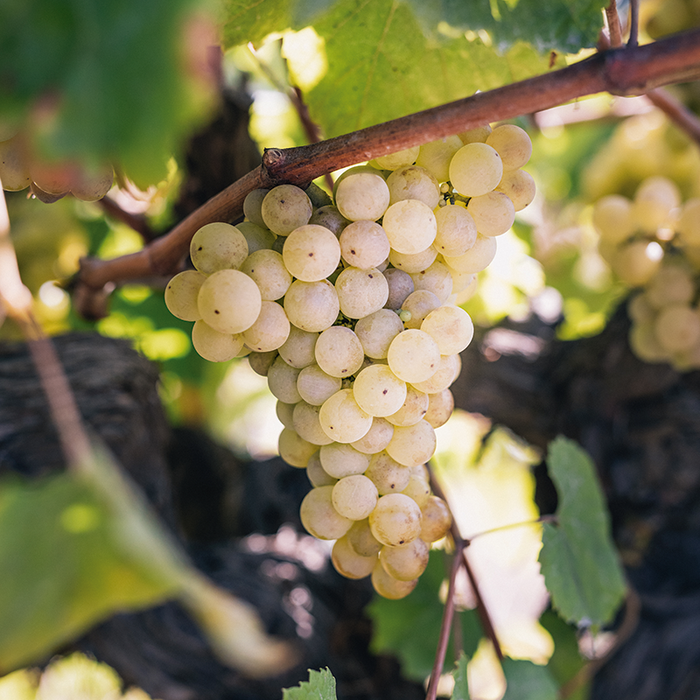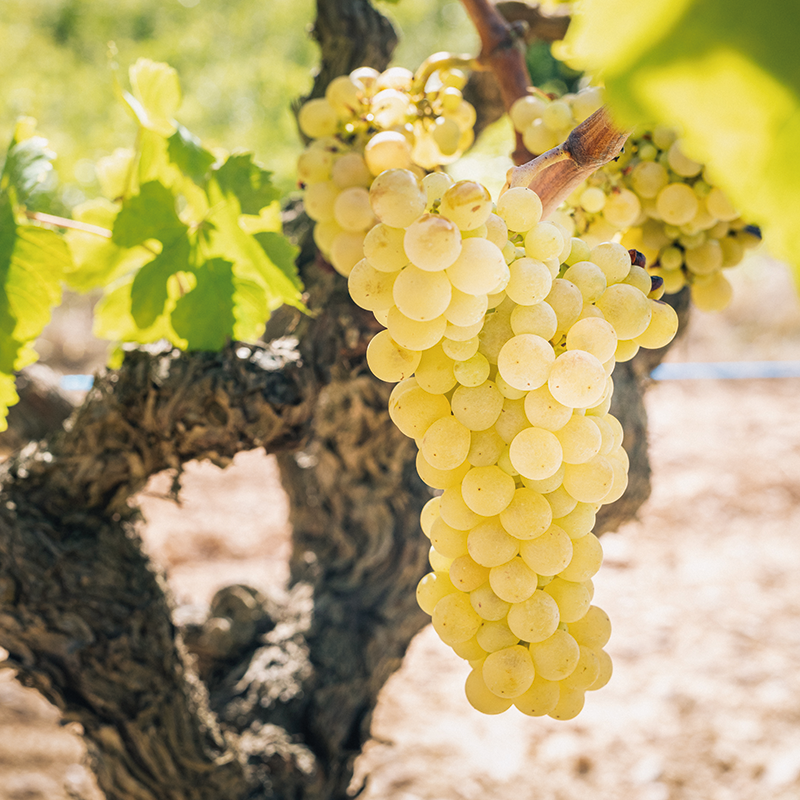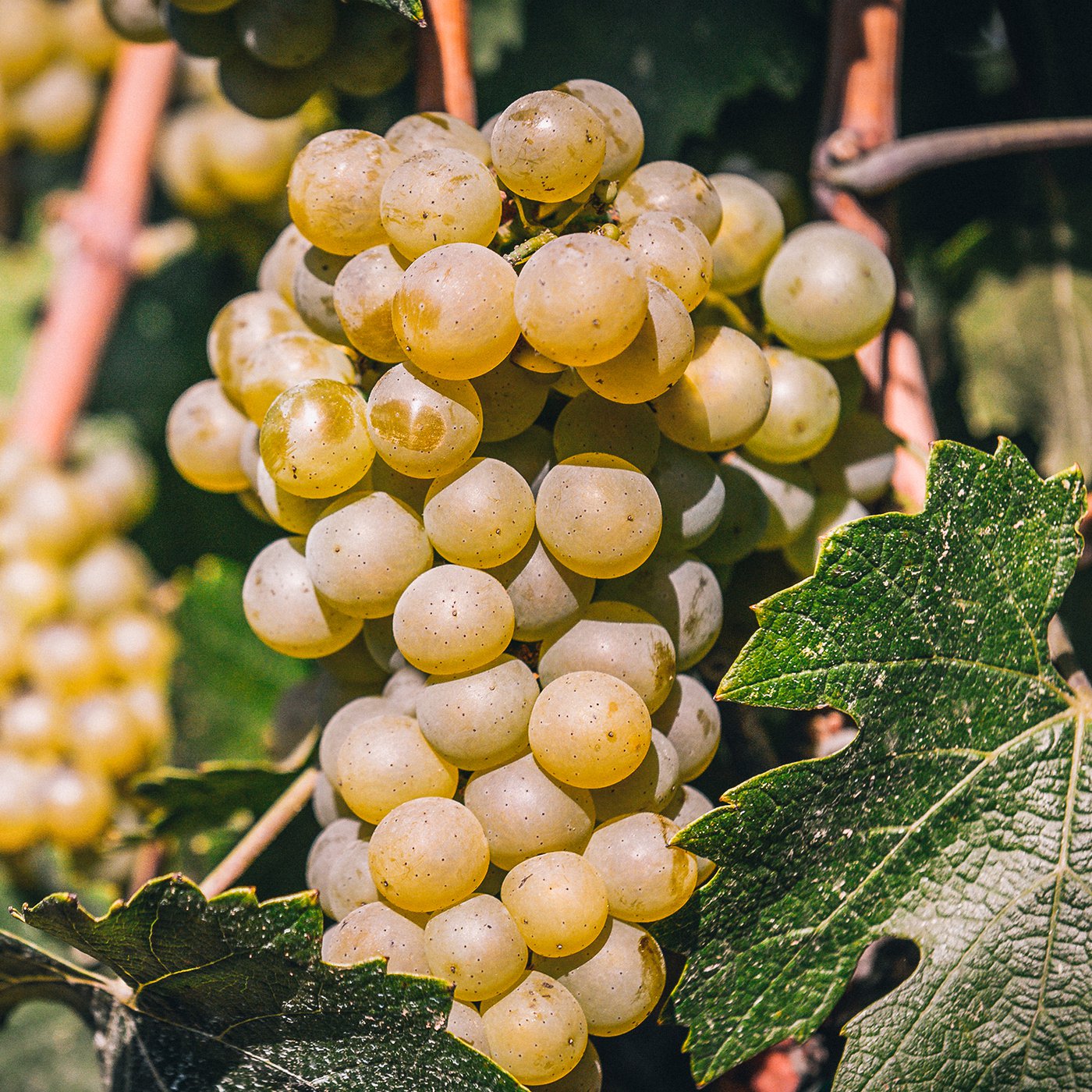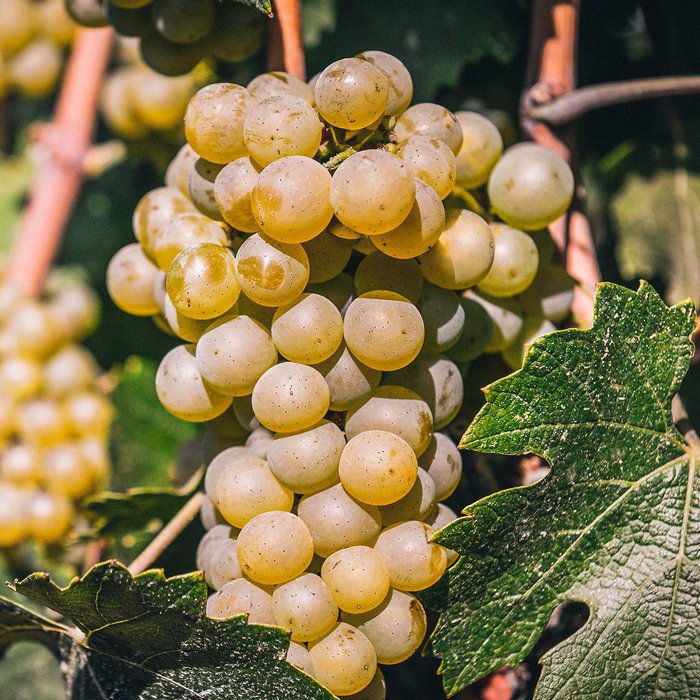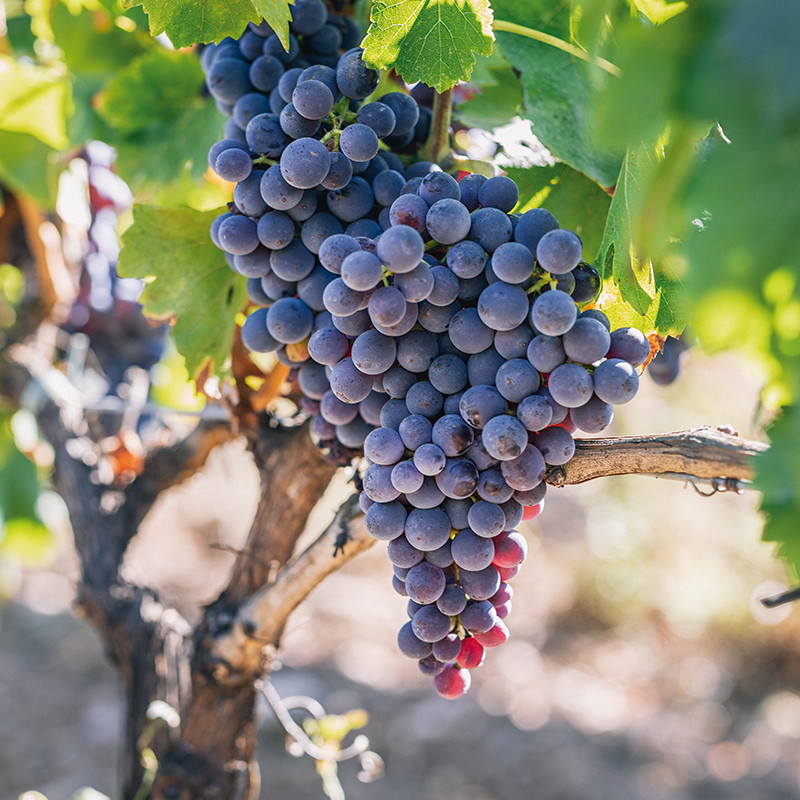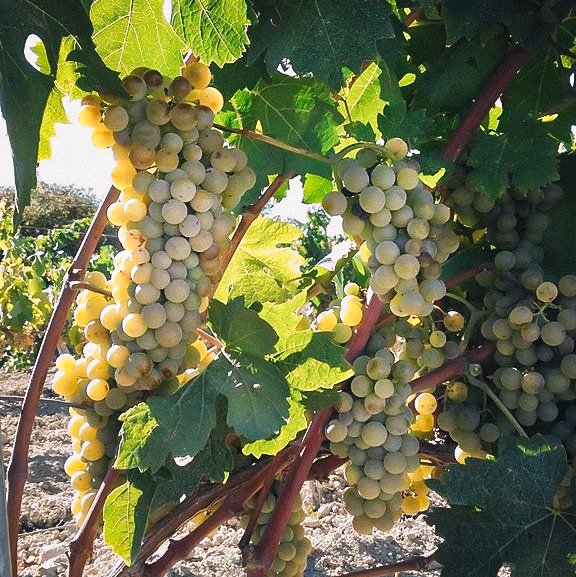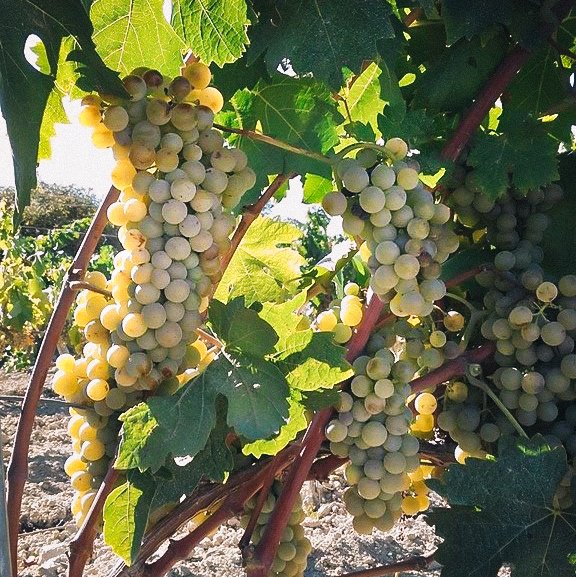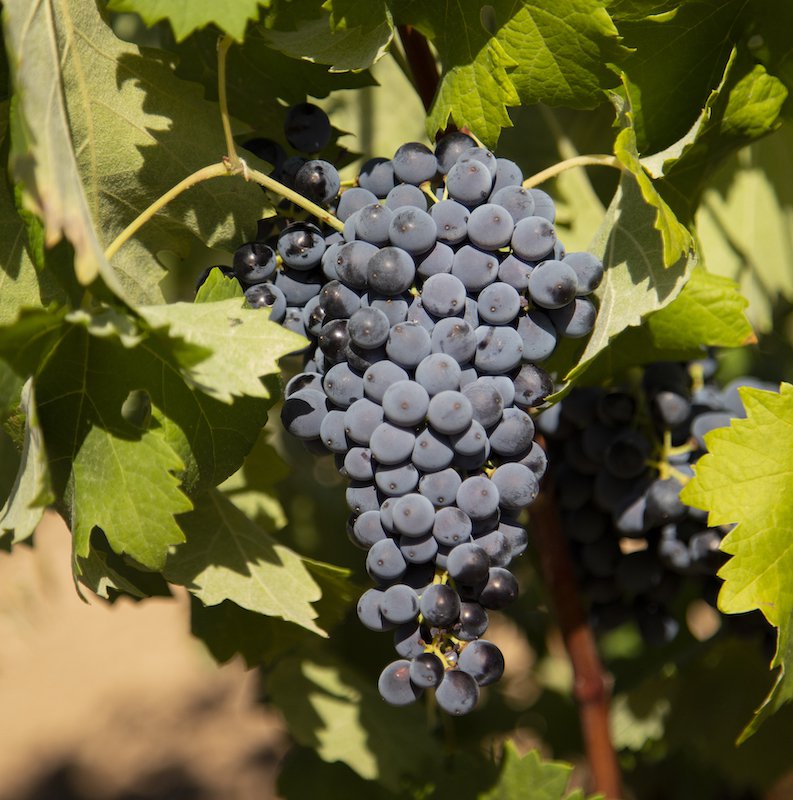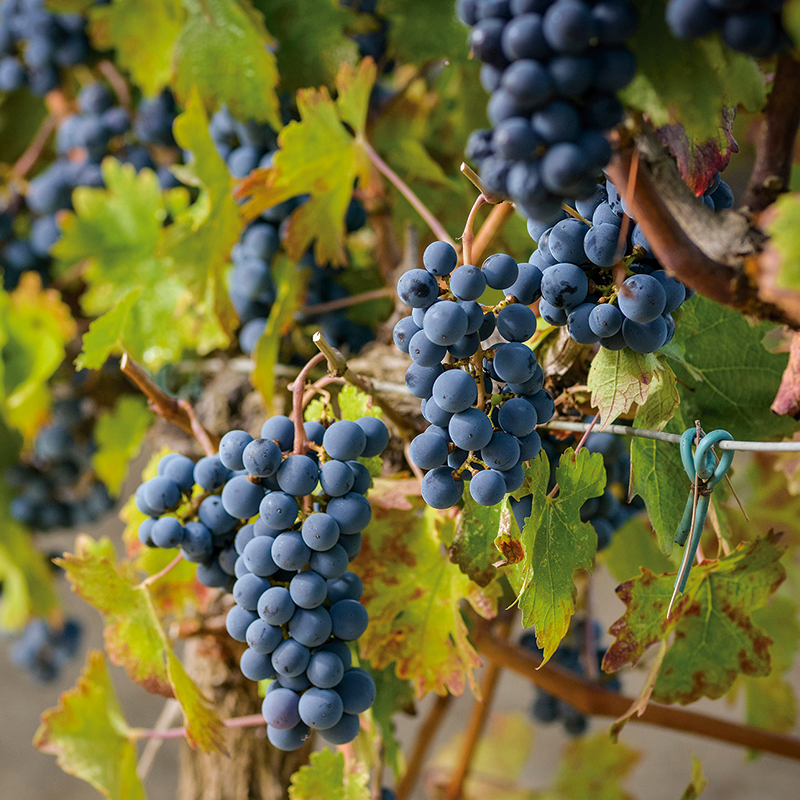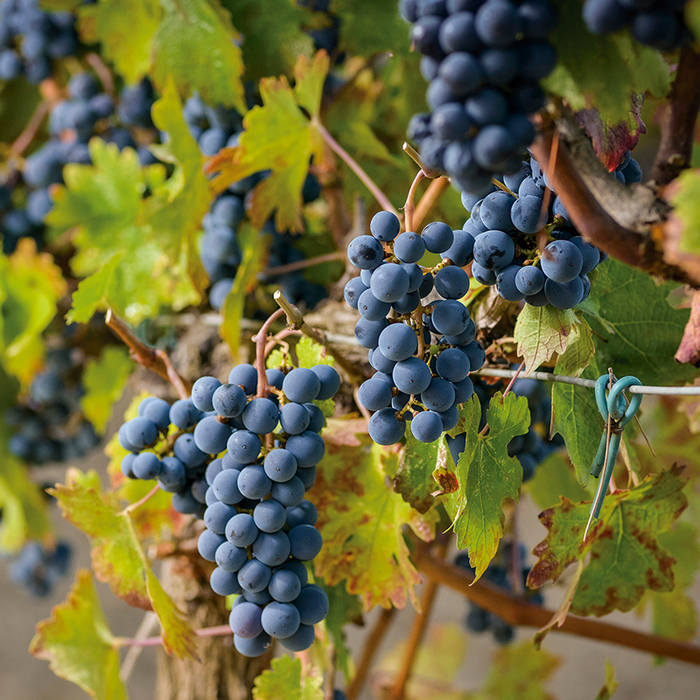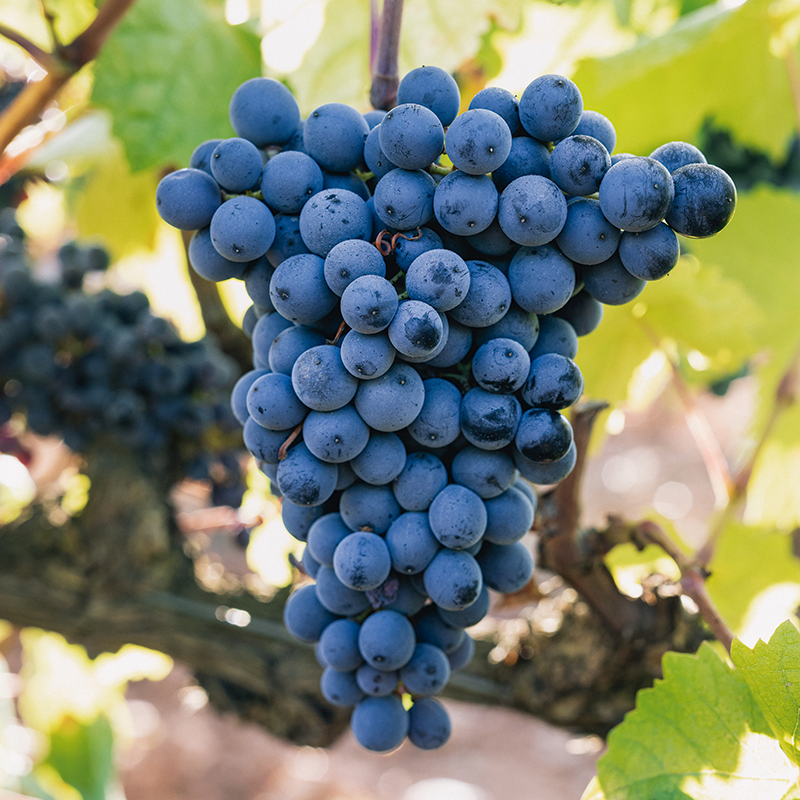Macabeo is one of the three grape varieties which make up the trinity of Cava, and the most planted within the Designation of Origin (D.O.) Cava. Considered to have originated in the Penedés area, specifically in Vilafranca, this variety was first mentioned in 1617.
With large, compact clusters, the Macabeo grape (also known as Viura) is extremely productive and highly robust. It has fine skin, a long cycle and late ripening, and produces light, floral wine, smooth, elegant and well-balanced. Moderate in sugar content and acidity, this grape is also highly valued for its good aging capacity .
